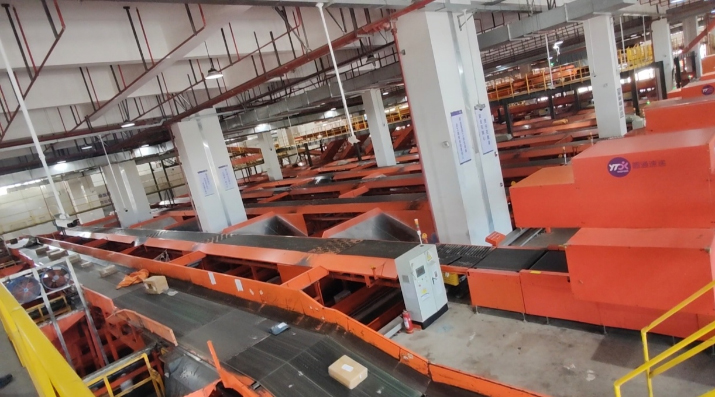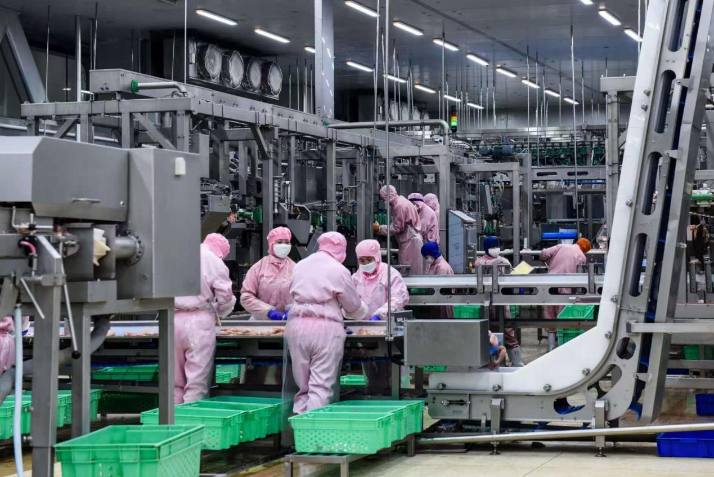| China |
| How county-level economies fuel rural revitalization | |
|
|
 Parcels travel on automatic transfer machines at a facility of YTO Express in Hengfeng County, Jiangxi Province, on July 10 (ZHANG YAGE)
While megacities like Beijing and Shanghai grab headlines with their glittering tech hubs and stock markets, far from the spotlight, many counties are quietly scripting their own success stories—proving that economic dynamism isn't confined to urban giants. In the case of Zixi County in Fuzhou City, Jiangxi Province, one single enterprise contributes over 6 percent of the county's GDP. "In 2024, Jiangxi Sunner Group produced 30.06 percent of the total industrial output value of Zixi County, contributed 4.71 percent of local tax revenue and provided 1,864 local jobs," Xi Jun, Vice President of Sunner Food Co. Ltd., a subsidiary of Jiangxi Sunner Group, explained. "Since our initial investment in Zixi in 2012, the group's cumulative investment has exceeded 4 billion yuan ($550 million), achieving an annual revenue surpassing 2 billion yuan ($275 million) in 2024." Located in east Jiangxi, Zixi is renowned for its pristine ecology. A former national-level poverty-stricken county, Zixi successfully lifted itself out of poverty in 2018 through eco-tourism and agribusiness development. Key enterprises like Jiangxi Sunner Group have boosted local employment and GDP growth. Today, Zixi serves as a model of rural revitalization, balancing green development with economic progress while maintaining its status as a Zero-Carbon Pioneer County. China's rural revitalization, a strategy introduced at the 19th Communist Party of China (CPC) National Congress in 2017, promotes the economic prosperity and overall development of rural areas. It builds on the success of the nationwide poverty alleviation campaign that had eradicated absolute poverty as of late 2020. A county-level economy refers to a regional economic system formed within the geographical boundaries of a county-level administrative region, with the county seat as its core. It leverages local resource endowments and distinctive advantages, such as natural resources, geographical conditions, or historical and cultural assets, to develop differentiated and specialized industries. Breeding success Jiangxi Sunner Group, a subsidiary of China's leading agri-food giant Sunner Development Co. Ltd., specializes in poultry raising and deep processing. Its integrated operations span feed production, chicken farming, slaughtering and processing, cooked food processing, and sales. "Sunner's investment in Zixi has funded the construction of 12 breeder farms, one hatchery, supporting logistics facilities, plus 11 hydropower stations," Xi said. "It is an internationally advanced, fully integrated supply chain—entirely self-sufficient in breeding, hatching, rearing, slaughtering and deep processing. For our Zixi branch, this end-to-end model generates comprehensive economic and employment benefits across the entire industrial chain." "I returned from working out of town to join Sunner in 2021 and now earn 5,000-6,000 yuan ($695-834) monthly," Zeng Xiaojuan, a Zixi native and employee of the agricultural giant, told Beijing Review. "The factory offers better working conditions than most. It's large in scale and provides stable wages. Most importantly, this job allows me to care for my two children and reunite with my family." Owing to the rapid process of Zixi's poverty alleviation and rural revitalization, Zeng's entire family now works for several pillar enterprises of Zixi County—a stark contrast to their previous life as migrant workers in distant provinces. Beyond infrastructure and job creation, Sunner prioritizes investment in research and development (R&D). In June 2022, Zixi County hosted the launch ceremony for Shengze 901—China's first fully self-developed parent stock for white-feathered broiler chickens. This breakthrough variety outperforms commercial alternatives with superior productivity and higher egg-laying rates. To achieve industrial cluster effects, local authorities have encouraged Sunner to play a leading role in driving the launch of multiple upstream and downstream industrial projects. "We turn feathers into feed for aquaculture, transform manure into organic fertilizer and power generation materials, and process poultry fat and bones into seasonings. This approach both benefits the ecological environment and extends our industrial chain," Xi said.  Jiangxi Sunner Group employees process chicken in Zixi County, Jiangxi, on July 9 (COURTESY PHOTO)
Connecting feats While Zixi's poultry farming and processing industry has extended its supply chain, Hengfeng County is propelling the rise of other industries. In the 2010s, Hengfeng, in Shangrao City, Jiangxi, launched a strategy to invigorate the county-level economy based on a unique regional advantage—it's central location in Shangrao. The logistics sector in Hengfeng now operates over 40 dedicated outbound express delivery routes covering 50 counties across adjacent provinces such as Zhejiang, Fujian and Anhui, with a daily average handling capacity reaching 1.8 million parcels. During peak periods, this figure surges to 2.6 million. Located in northeast Jiangxi at the crossroads of four provinces, Hengfeng enjoys strategic advantages with the G60 Shanghai-Kunming Expressway and National Highway 320 running through it. In recent years, the county has attracted major logistics giants like YTO, ZTO and STO, with its well-developed industrial park infrastructure and efficient government services. The rapid development of the logistics industry has brought about a cluster effect, creating opportunities for e-commerce and manufacturing in the region. "Hengfeng has a solid foundation for e-commerce development, with abundant local specialty agricultural products and many residents having gained experience working in Zhejiang's e-commerce industry. The rise of the logistics sector has provided locals with new opportunities to increase their incomes." Yang Jun, Secretary of the CPC Committee of Shangrao Economic Development Zone, said. "To strengthen the industrial chain, we've boosted the development of e-commerce companies by encouraging local entrepreneurs and attracting businesses from other provinces. Most of the e-commerce businesses are in light industries. However, if these businesses only sell here without producing locally, their impact on the local economy is limited. That's why we've also introduced incentives to draw in manufacturers," Yang added. "Now, we've established a model of integrated development across three sectors. Hengfeng is home to 1,260 e-commerce businesses, employing around 5,000 local people—a significant scale for a small county like Hengfeng," Yang said. In 2021, the Zhejiang-based Feitian Group invested 2 billion yuan ($280 million) to build an e-commerce industrial park in Hengfeng, encompassing projects such as e-commerce product R&D and production, smart manufacturing, new retail e-commerce trade, and a livestreaming host incubation base. "Since the e-commerce park's construction began in March 2021, we've attracted 78 companies to set up operations in Hengfeng, including many home furnishing businesses with annual output values reaching 200 million yuan ($28 million). These firms together contribute over 6 million yuan ($830,000) annually in tax revenue to Hengfeng," said Wu Daojun, general manager of Feitian's e-commerce industrial park in Shangrao. The industrial park developed by Feitian has drawn a large number of small manufacturers from Jinhua City in Zhejiang, another e-commerce hub. More than 10 of these businesses now each ship over 5,000 orders daily. "Many might assume big cities offer the most opportunities for enterprises; but in reality, small counties are often the best fit for traditional manufacturing and labor-intensive small and medium-sized enterprises. Here, they benefit from increasingly robust infrastructure, low-cost utilities and rent, and abundant local labor. Many companies in our park save nearly 5 million yuan ($700,000) annually compared with operating in their previous urban locations," Wu added. Manufacturing and e-commerce have in-turn gave a boost to the thriving logistics business. "ZTO Express has been operating in Hengfeng since September 2021. Compared to the provincial capital Nanchang, the delivery service here is more cost-effective and significantly faster," Wan Jianping, head of ZTO Express' Shangrao Transfer Center, said. "The local government's support for e-commerce and manufacturing has greatly benefited our business. During peak consumption periods this year, such as the Chinese New Year shopping spree, our average daily throughput reached 1.2 million parcels. It's a win for both sides, as we offer local e-commerce merchants about a 30-percent discount on shipping fees," Wan explained. (Reporting from Jiangxi Province) Copyedited by G.P. Wilson Comments to zhangyage@cicgamericas.com |
|
||||||||||||||||||||||||||||||
|